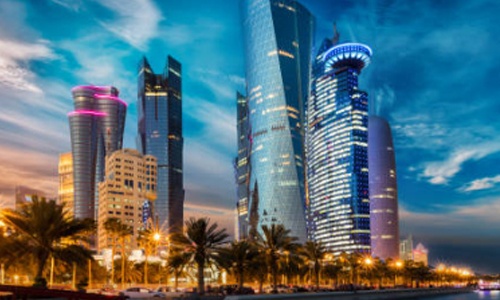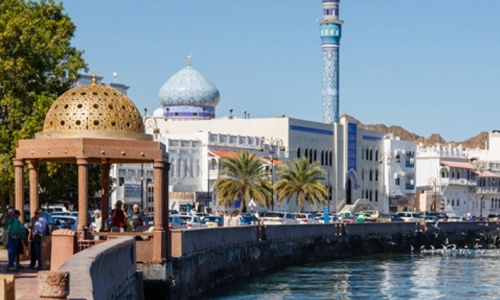
Doha, Qatar
Qatar is the biggest LNG exporter in the world, supplying to various places around the globe with proved reserves comprise 13% of the world total. Nevertheless the country takes measure to de-carbonize the economy. Gas production is 158.5 bln. m3, consumption is 32.93 bln. m3, export is 125.5 bln. m3, import is 6.5 bln. m3, reserves are 25.07 trillion m3. GDP in 2014 was $210 billion; growth rate in sequential years was 6 % in 2012, 6.3 % in 2013, 6.1 % in 2014. The major sectors are –industry takes 68 % of total economy – liquefied natural gas, crude oil production and refining, ammonia, fertilizers, petrochemicals, steel reinforcing bars, cement, commercial ship repair; services are at 31.9 %; agriculture has only 0.1 % – fruits, vegetables; poultry, dairy products, beef and fish. The desert nature in the region, make the agrarian business impossible. Labor force is 1.5 mln.; unemployment is 0.4 % in 2014. National trade exports: $121 bln. – liquefied natural gas (LNG), petroleum products, fertilizers, steel; Japan 25.3%, South Korea 18.8%, India 12.7%, China 7.7%, Singapore 6.2%, UAE 5.1%. Trade imports: $39.12 bln. – machinery and transport equipment, food, chemicals; US 11.5%, China 10.6%, UAE 8.2%, Germany 7.1%, Japan 6.4%, UK 5.5%, Italy 4.9%, Saudi Arabia 4.6%. Debt: $158 bln. Electricity production is 32.7 bln. kWh, all internally consumed; generation capacity is 8 GW, with 98.5 % fossil and renewable is 1.5 %. The harsh climate makes people stay mostly indoor, putting a strong burden on cooling facilities, respectively on an electrical power production. Air-conditioning is working day and night, consuming tremendous portion of the energy produced. All new technologies in efficient and energy saving lighting are applied. Crude production is 1.54 mln. bbl/day, export is 1.232 mln. bbl/day, import is 118 000 bbl/day, reserves 25.24 bln. bbl. Refined production – 311 000 bbl/day, consumption – 230 000 bbl/day, export 554 000 bbl/day. The cost of fuel is very low and does not support saving performance from drivers. In the same the weak public transport makes the private cars and taxis the only option for transportation. Strong construction activities are going on all around the country and in Doha – malls, roads, villas, recreational places, artificial landscape. Two entirely new cities are in construction – Lusail and Al Waab, giving rise to heavy transport, sea shipments and flow of new foreign workers. Qatar’s hosting of FIFA 2022 World Cup is accelerating large-scale infrastructure projects such as Qatar’s metro system, light rail system, a new port, roads, stadiums and related sporting infrastructure, those change the vision of Doha. The city streets are full with heavy trucks, noise and traffic jams are intensifying. Numerous international construction and consultant companies are presented there, attracted by the plans of Qatar and also by the favorable legislation, as the US, UK and EU norms are respected. Qatar is planning also to become a health hub of the Arabic peninsula and rehabilitation of old hospitals or new construction takes place. Opportunities in the outside environment are in connection of: the stable demand in the world market for LNG; stable political relations with other Arabic countries, EU and US and trade relations with China, Japan, South Korea and India; good image of the country. Threats are related to: the steep fall of the oil & gas prices worldwide; new discoveries with gas, which increase competition; development of new technologies, which make non-traditional resources cheaper than traditional ones; political one, related to the ongoing wars in Syria and Iraq, which destabilizing Middle East; terrorism, spread out in all Arabic world and Africa, making a wide region unsafe, etc. The main weakness of Qatar is too much dependence on the oil & gas business and export. The steps taken for de-carbonizing the economy are not giving quick results in that direction. Also too much dependence on the foreign workforce, as it is at the moment, makes the country vulnerable to external factors. Local population shall gradually take over common working activities in private companies, instead of relying on the jobs in public offices only. Strengths are numerous: big national wealth; strong construction changing the structure of the economy and the vision of the country; all new technologies are applied in new construction; developed public facilities, rule of law; international codes are applied in construction – US, UK and EU; the willingness of local authorities to build a modern state, with the best infrastructure and healthcare and other services; common understanding that de-carbonizing the economy is the best future of the economy; the developments would make Qatar as an attractive touristic destination.








